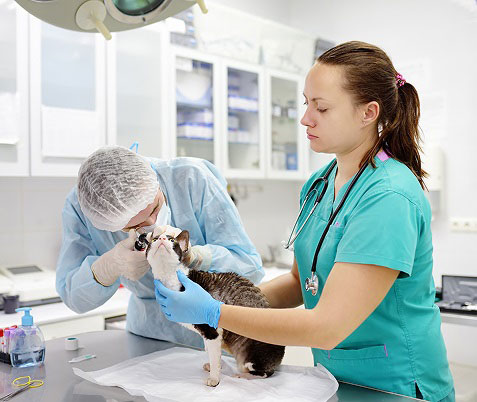To become an EMT, you’ll need to complete specialized training and obtain certification, which typically takes about 3-6 months. The EMT career path offers opportunities for growth and specialization, with options to advance to higher levels of emergency medical services.
As an EMT, you’ll face unique challenges and rewards daily. Your work will involve quick decision-making, physical demands, and emotional resilience. The job outlook for EMTs is positive, with faster-than-average growth projected through 2033. If you’re passionate about helping others and thrive in high-pressure situations, an EMT career could be an excellent fit for you.
Becoming an EMT
Embarking on a career as an Emergency Medical Technician (EMT) requires dedication, training, and specific qualifications. You’ll need to meet education requirements, obtain certification, develop essential skills, and complete specialized training programs.
Education and Certification Requirements
To become an EMT, you must be at least 18 years old and have a high school diploma or equivalent. The next step is to complete a state-approved EMT training program. These programs typically take 3-6 months to finish.
After completing your training, you’ll need to pass the National Registry of Emergency Medical Technicians (NREMT) exam. This test consists of a cognitive and psychomotor component.
Once certified, you’ll need to maintain your certification through continuing education and refresher courses. Requirements vary by state, so check with your local EMS office for specific details.
Essential Skills and Qualities
As an EMT, you’ll need a combination of technical skills and personal qualities to excel in your role. Key skills include:
- Strong communication abilities
- Quick decision-making under pressure
- Physical stamina and strength
- Attention to detail
- Problem-solving skills
Personal qualities that contribute to success as an EMT include:
- Compassion and Empathy
- Emotional Stability
- Teamwork and Collaboration
- Adaptability to Changing Situations
Developing these skills and qualities will help you provide effective care in emergency situations.
EMT Training Programs
EMT training programs cover a wide range of topics to prepare you for the challenges of emergency medical care. These programs typically include:
- Anatomy and Physiology
- Patient Assessment
- Airway Management
- Cardiac and Respiratory Emergencies
- Trauma Care
- Medical Emergencies
You’ll also receive hands-on training in skills such as:
- CPR and Automated External Defibrillator (AED) Use
- Splinting and Bandaging
- Administering Medications
- Operating Emergency Vehicles
Many programs offer ride-along experiences with working EMTs to give you practical exposure to the job. Completing an accredited program ensures you receive quality education that meets industry standards.
Find Your Online Emergency Medical Technician Program
| Quick Facts: EMTs and Paramedics | |
|---|---|
| 2023 Median Pay ?The wage at which half of the workers in the occupation earned more than that amount and half earned less. Median wage data are from the BLS Occupational Employment and Wage Statistics survey. In May 2023, the median annual wage for all workers was $48,060. | $44,780 per year $21.53 per hour |
| Typical Entry-Level Education ?Typical level of education that most workers need to enter this occupation. | Postsecondary nondegree award |
| Work Experience in a Related Occupation ?Work experience that is commonly considered necessary by employers, or is a commonly accepted substitute for more formal types of training or education. | See How to Become One |
| On-the-job Training ?Additional training needed (postemployment) to attain competency in the skills needed in this occupation. | None |
| Number of Jobs, 2023 ?The employment, or size, of this occupation in 2023, which is the base year of the 2023-33 employment projections. | 270,400 |
| Job Outlook, 2023-33 ?The projected percent change in employment from 2023 to 2033. The average growth rate for all occupations is 4 percent. | 6% (Faster than average) |
| Employment Change, 2023-33 ?The projected numeric change in employment from 2023 to 2033. | 16,200 |
Career Outlook
The career outlook for Emergency Medical Technicians (EMTs) is promising, with steady growth projected in the coming years. You can expect opportunities for advancement and specialization within this dynamic field.
Job Market Trends
The EMT and paramedics job market is projected to grow 6% from 2023 to 2033, faster than the average for all occupations. This growth translates to an increase from about 262,000 to nearly 282,000 positions in those years.
You’ll find most job openings in ambulance services, government agencies, and hospitals. The aging population and increased demand for emergency services contribute to this positive outlook.
Rural and underserved areas may offer more job prospects due to high demand and lower competition. You might also consider specializing in areas like wilderness rescue or flight medicine to enhance your employability.
Advancement Opportunities
As an EMT, you have several paths for career advancement. You can progress from EMT-basic to EMT-intermediate and then to paramedic, each level requiring additional training and certification.
With experience, you may move into supervisory or management roles within emergency medical services. Some EMTs transition to other healthcare professions, such as nursing or physician assistant, building on their medical knowledge and patient care skills.
You can also pursue specializations like:
- Critical Care Transport
- Tactical Emergency Medicine
- Community Paramedicine
- Disaster Response
Continuing education and obtaining additional certifications can open doors to higher-paying positions and more specialized roles in the field.



